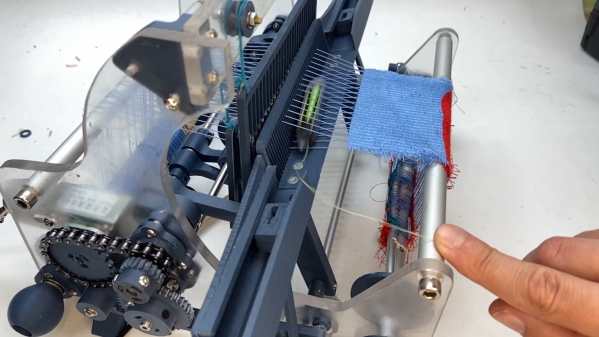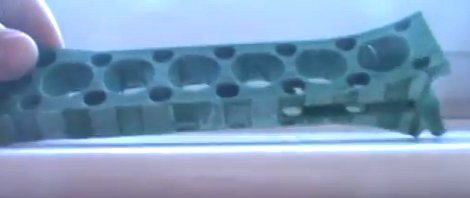The seemingly humble flying-shuttle loom, originally built to make the weaving of wide cloth faster and easier, stood at the threshold between the largely handcrafted world of the past and the automated world that followed. And judging by how much work went into this miniature 3D-printed power loom, not to mention how fussy it is, it’s a wonder that we’re not all still wearing homespun cloth.
Dealing with the warp and the weft of it all isn’t easy, as [Fraens] discovered with this build. The main idea with weaving is to raise alternate warp threads, which run with the length of the fabric, to create a virtual space, called the shed, through which a shuttle carrying the weft thread is passed. The weft thread is then pressed in place by a comb-like device called the reed, the heddles carrying the warp threads shift position, and the process is repeated.
[Fraens]’ version of the flying-shuttle loom is built mostly from 3D-printed parts, with a smattering of aluminum and acrylic. There are levers, shafts, and cams galore, not to mention the gears and sprockets that drive the mechanism via a 12-volt gear motor. The mechanism that moves the shuttle back and forth in the shed is particularly interesting; it uses cams to release the tension stored in elastic bands to flick the shuttle left and right. Shuttle timing is critical, as a few of the fails later in the video show. [Fraens] had to play with cam shape and lever arm length to get the timing right, not to mention having to resort to a chain drive to get enough torque to move the shuttle.
We’ve seen power looms before, but mainly those that operate at a somewhat more stately pace than this one. Hats off to [Fraens] for showing the true complexity involved in automating weaving.
Continue reading “3D-Printed Power Loom Shows How Complex Weaving Really Is”















